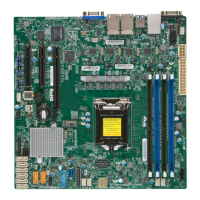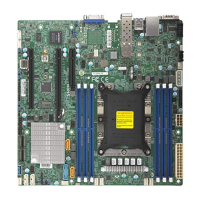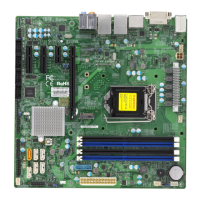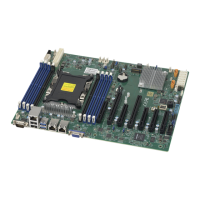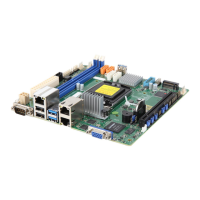15
Chapter 1: Introduction
Motherboard Features
Peripheral Devices
• Two (2) USB 2.0 ports on the I/O back panel (USB 0/1)
• Four (4) front accessible USB 2.0 connections via two headers (USB 2/3, USB 4/5)
• Four (4) USB 3.0 ports on the back panel (USB 6/7, USB 8/9)
• Two (2) front accessible USB 3.0 connections via one header (USB 10/11)
• Two (2) USB 3.1 ports on the back panel (USB 12/13)
BIOS
• 256Mb AMI BIOS® SPI Flash BIOS
• Plug and Play (PnP), SPI dual/quad speed support, real time clock (RTC) wakeup, DMI 3.0, ACPI 3.0+, USB Keyboard,
BIOS rescue hot-key, and SMBIOS 2.7+
Power Management
• ACPI power management
• CPU fan auto-off in sleep mode
• Power button override mechanism
• Power-on mode for AC power recovery
System Health Monitoring
• Onboard voltage monitors for CPU cores, +3.3V, +5V, +/-12V, +3.3V Stby, +5V Stby, VBAT, Memory, PCH temperature,
system temperature, and memory temperature
• CPU 5+1 phase switching voltage regulator
• CPU/System overheat control
• CPU Thermal Trip support
Fan Control
• Fan status monitoring with rmware 4-pin fan speed control via IPMI or SIO (X11SRA) interface
• Multi-speed fan control via onboard BMC
System Management
• PECI (Platform Environment Control Interface) 3.1 support
• IPMI 2.0 with KVM support
• SuperDoctor® 5, Watch Dog, NMI
• Chassis Intrusion header and detection
• Power supply monitoring
LED Indicators
• Power LED
Other
• RoHS
Dimensions
• ATX form factor (12.0" x 9.6") (304.80 mm x 243.84 mm)
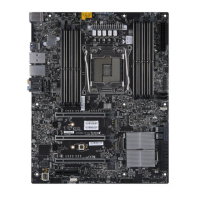
